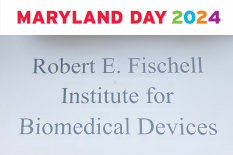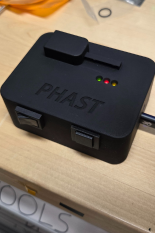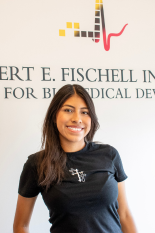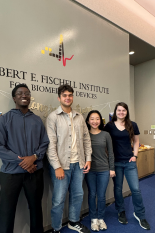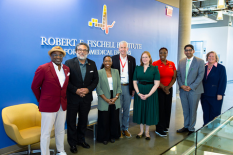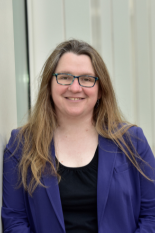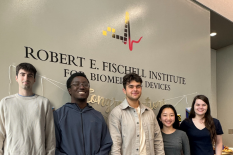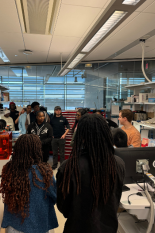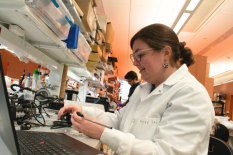News Story
Fischell Institute Participates in Maryland Day 2025
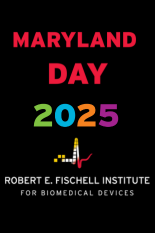
The Fischell Institute participated in Maryland Day, the University of Maryland’s largest annual community outreach event, on Saturday, April 26, 2025.
The institute was represented by Fischell Institute Fellow Chris Jewell’s research lab, Fischell Institute Fellow Reza Ghodssi’s MEMS Sensors and Actuators Lab (MSAL), Fischell Fellow Catherine K. Kuo’s research lab, Affiliate Fellow Gregg Duncan’s Respiratory NanoBioengineering (RnB) lab, Affiliate Fellow Elisabeth Smela’s Laboratory for MicroTechnologies, Fischell Fellow Alisa Clyne’s Vascular Kinetics Lab, Affiliate Fellow Eleonora Tubaldi’s research lab, Affiliate Fellow Yancy Diaz-Mercado’s Collaborative Controls and Robotics Lab (CCRL),and Affiliate Fellow Don Milton’s Public Health AeroBiology Laboratory (PHAB Lab).
The Jewell Research Lab’s event featured family-friendly, hands-on engineering experiments using materials such as baking soda and vinegar to create small explosions in a bag. This experiment taught children about gas laws, chemical reagents, and how dosing reagents can alter outcomes. The lab also demonstrated how ice cream is made using liquid nitrogen. 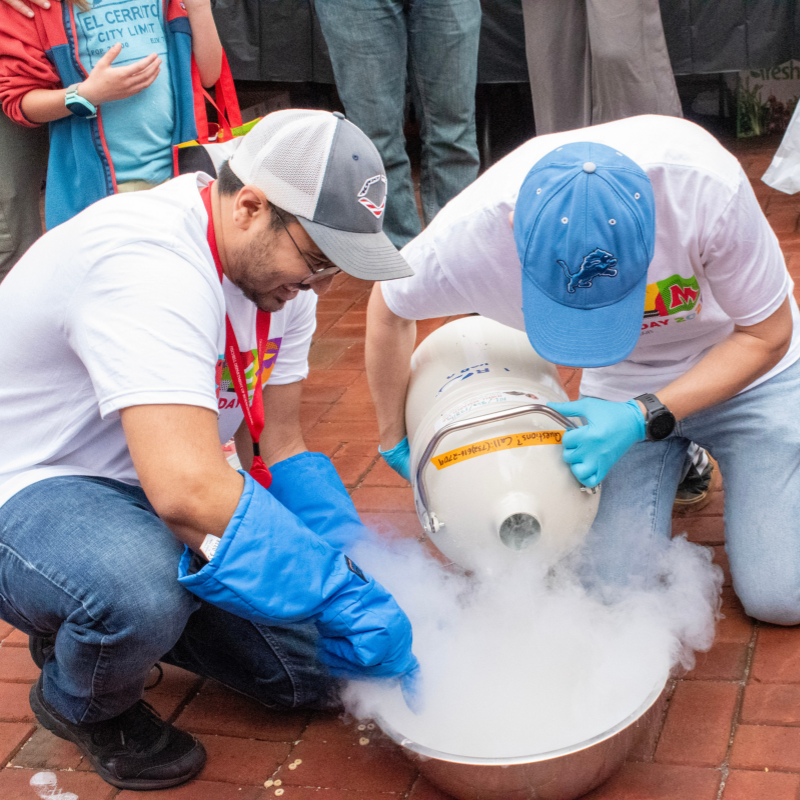
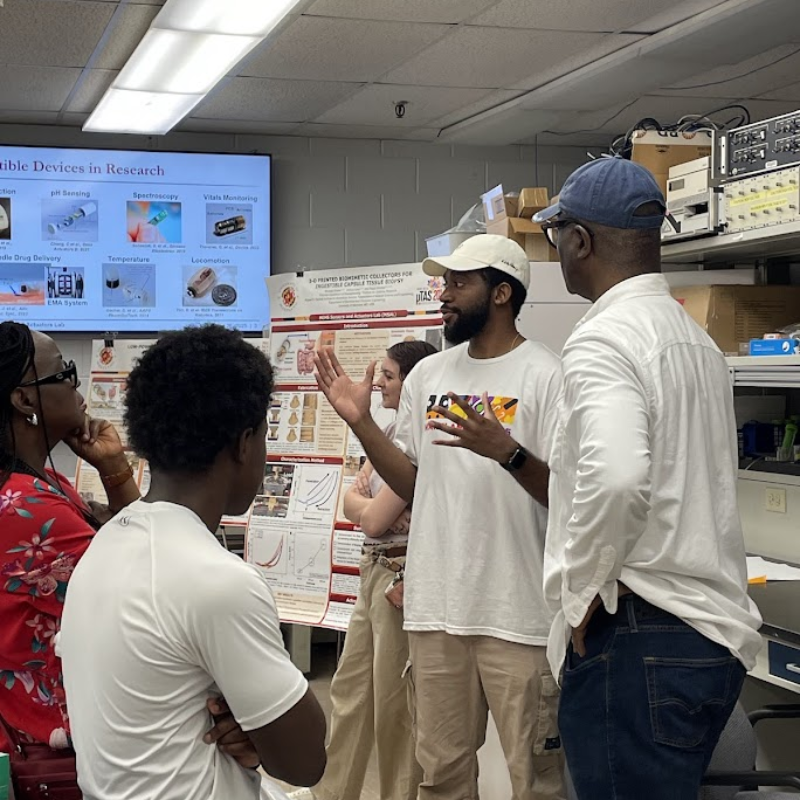 Ghodssi’s MSAL showcased their 3D printing capabilities with a demonstration of the Eiffel Tower being constructed and samples of a tiny, 3D-printed turtle that had to be viewed under a microscope. The team also spoke with visitors about their ingestible capsule research.
Ghodssi’s MSAL showcased their 3D printing capabilities with a demonstration of the Eiffel Tower being constructed and samples of a tiny, 3D-printed turtle that had to be viewed under a microscope. The team also spoke with visitors about their ingestible capsule research.
Kuo’s lab taught visitors about the functions and importance of tendons in the body. The lab, which develops regenerative therapeutics for tendon injuries and diseases, invited attendees to build a model hand using cardboard, straws and colorful yarn. Each tendon (yarn) moved a finger as the tendon was pulled. Participants were invited to decorate their cardboard hands and take them home. 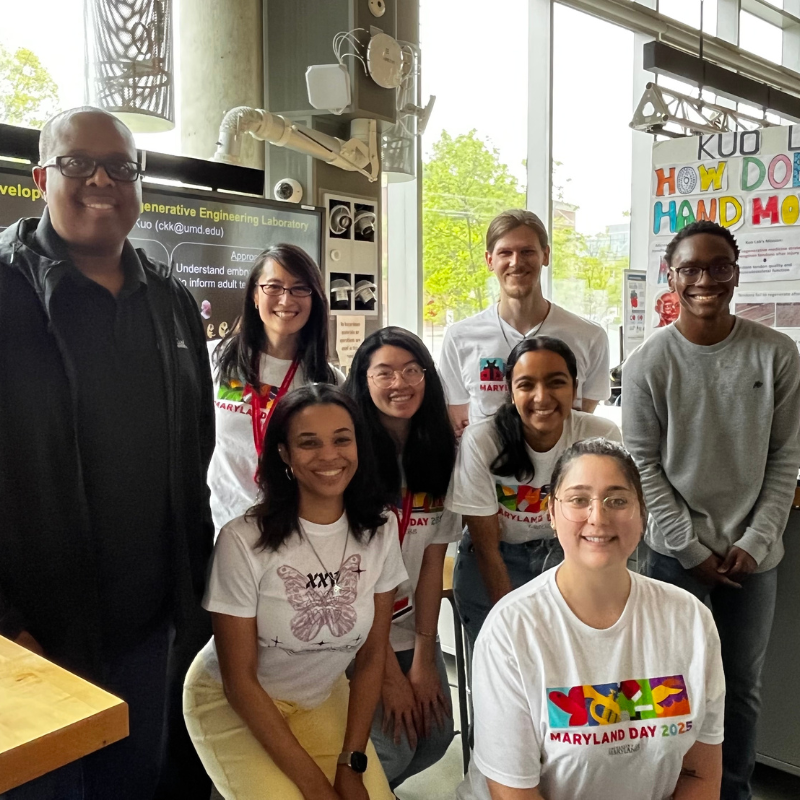
The Duncan Lab offered an activity creating model lungs out of balloons, cups and straws, and prepared kits with the model lung materials for children to take and recreate at home. In addition, the lab made a spin-off of the Plinko game, where children played as influenza and had to hit either the pandemic or infection spaces to win. The lab also featured a 3D-printed nasal cast that showed the front, middle and back of the nose.
 A. James Clark School of Engineering Dean Samuel Graham stopped by the Kuo Lab and Duncan Lab stations and appreciated how uniquely the PIs and labs showcased their research.
A. James Clark School of Engineering Dean Samuel Graham stopped by the Kuo Lab and Duncan Lab stations and appreciated how uniquely the PIs and labs showcased their research.
Smela’s Laboratory for MicroTechnologies and Science, Technology and Society Director David Tomblin hosted the “Name That Smell” game and discussed their artificial nose research. The lab also displayed a poster on their research, as well as a board that challenged visitors to describe how they might use a hand-held odor identifier in their daily lives. 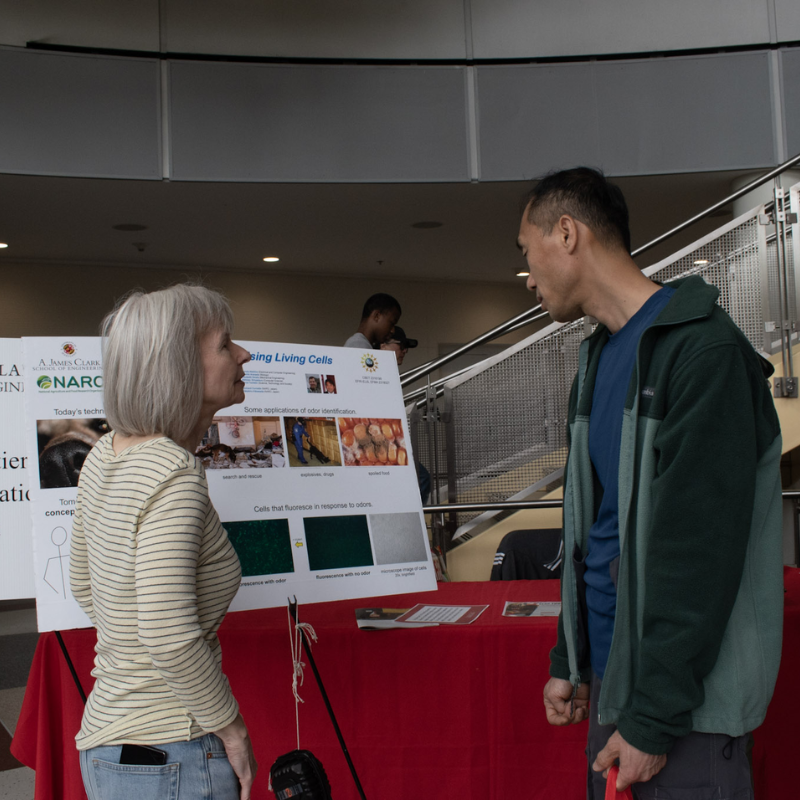
Clyne’s Vascular Kinetics Lab participated for the first time. She and her lab members took people’s blood pressure before and after 30 seconds of exercise and collected all the data on a graph that they displayed throughout the day. The goal was to teach about forces in the vascular system and how it changes in people of different ages. The lab also had some dissected sheep hearts to show people the different chambers and valves in the heart. Informational posters on blood pressure, diabetes, atherosclerosis and valve disease were displayed to educate people about heart health. University of Maryland President Darryll Pines stopped by and was impressed with the lab’s activity. 
Tubaldi’s lab showed how simple geometric structures can be designed and combined to produce fast shape changes through a special type of behavior called snap-through instability. These stimuli-responsive structures enable the design of adaptive devices with applications to microfluidic valves and micro-objects manipulation. 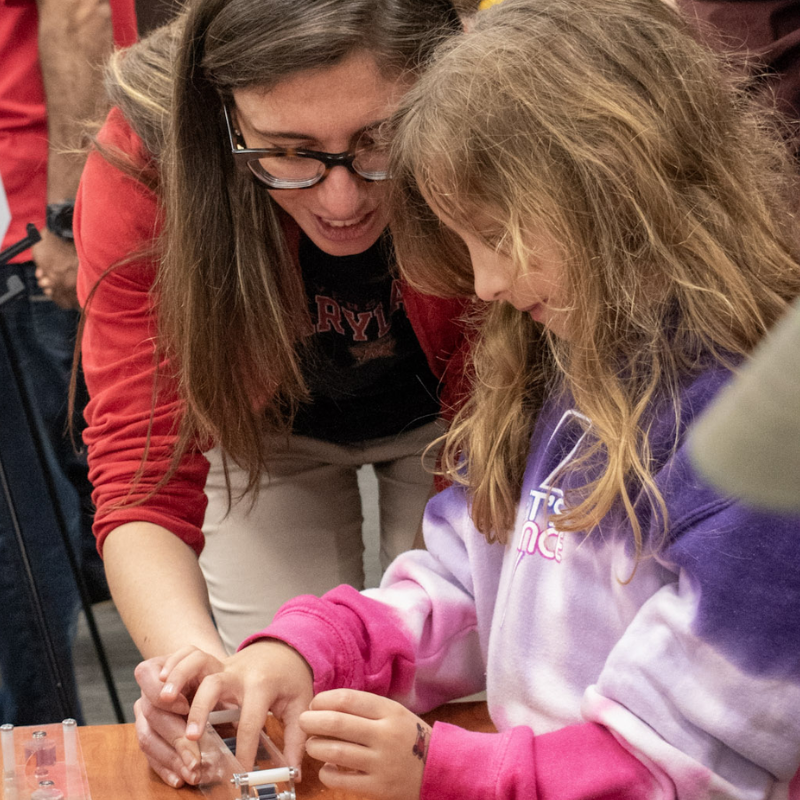
Diaz-Mercado’s CCRL explored how to coordinate robots to accomplish complex tasks, like allowing a single person to easily drive a large team of robots around obstacles or moving needles with magnetic fields for surgery.
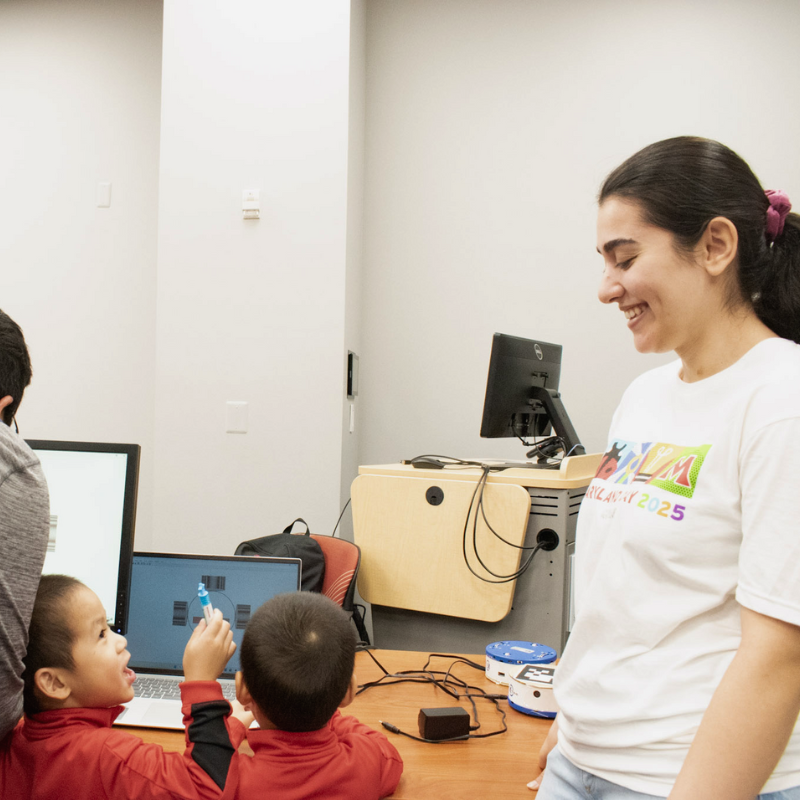 Milton’s PHAB Lab included an educational section where visitors learned about viruses, the lungs and masks, and a technical display that showcased their Gesundheit-II machine, which collects exhaled breath. The lab also measured carbon dioxide in a booth, displayed their DIY air filter, called a Corsi-Rosenthal Box, and demonstrated their UV “germ-killing” lights. Each station demonstrated individual actions that help reduce airborne viruses from reaching people’s lungs—but together, they form a layered approach to preventing respiratory illnesses.
Milton’s PHAB Lab included an educational section where visitors learned about viruses, the lungs and masks, and a technical display that showcased their Gesundheit-II machine, which collects exhaled breath. The lab also measured carbon dioxide in a booth, displayed their DIY air filter, called a Corsi-Rosenthal Box, and demonstrated their UV “germ-killing” lights. Each station demonstrated individual actions that help reduce airborne viruses from reaching people’s lungs—but together, they form a layered approach to preventing respiratory illnesses. 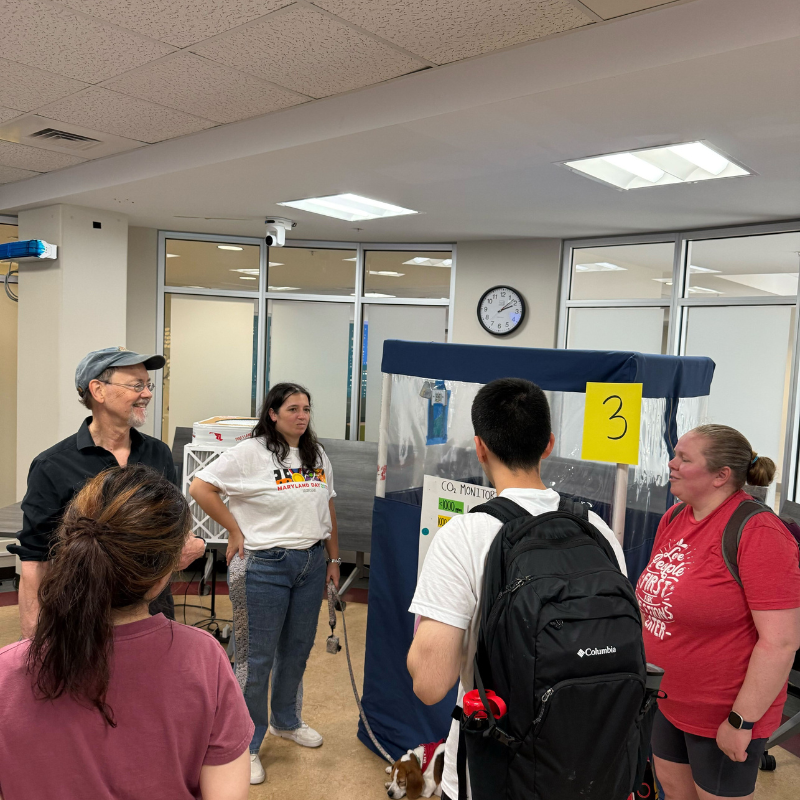
Published May 1, 2025
